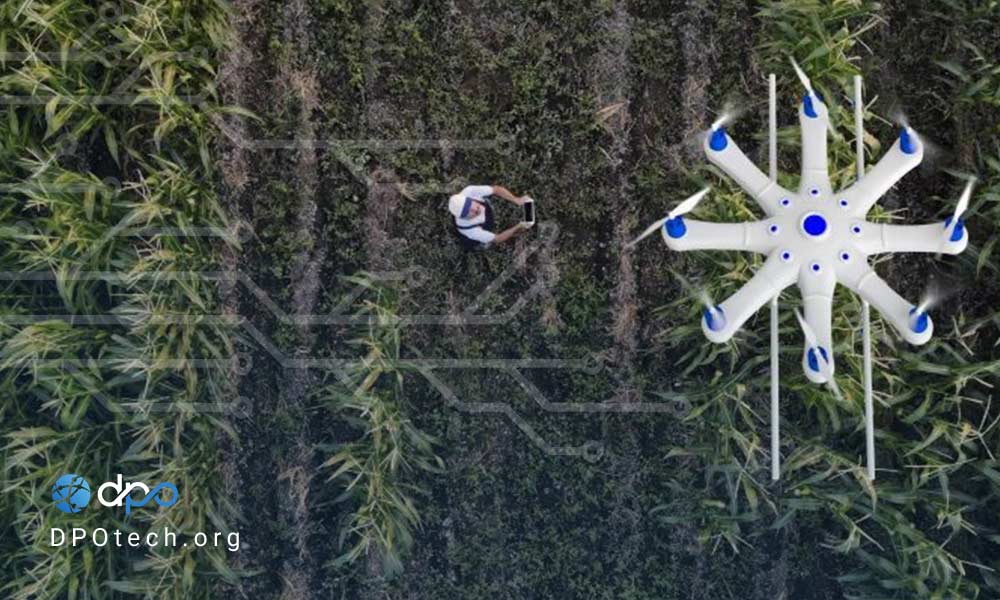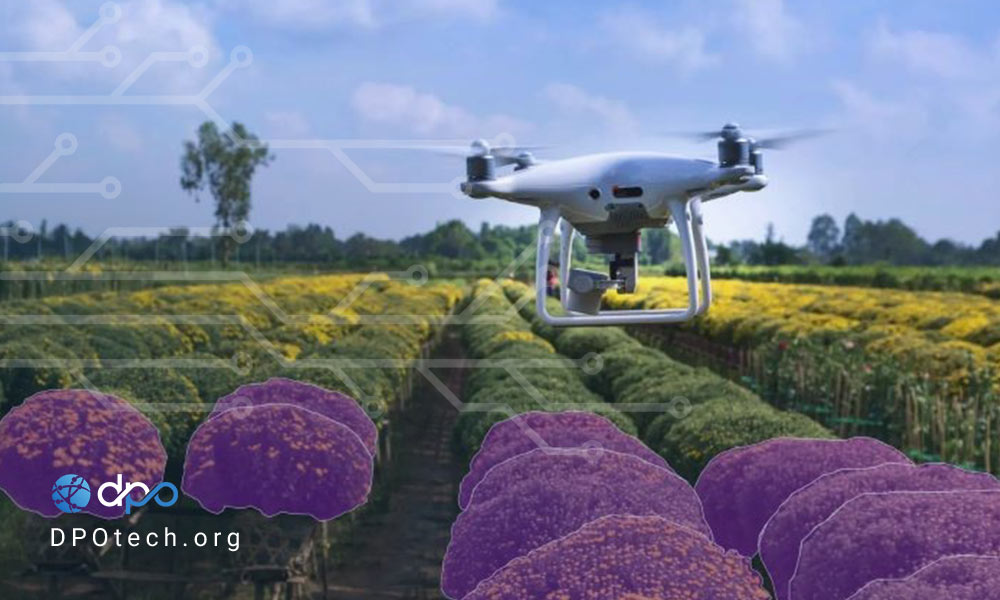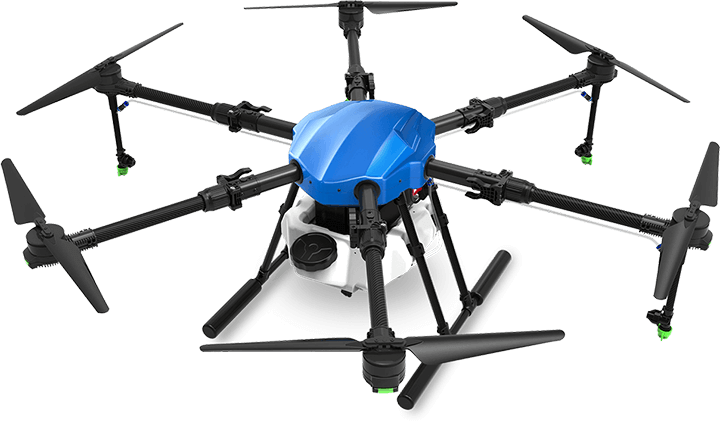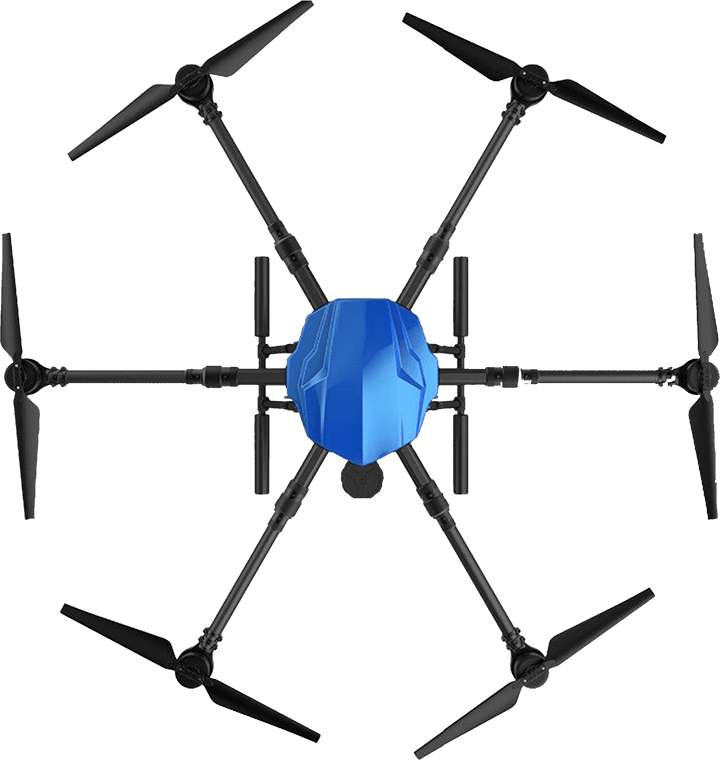The impact of agricultural drones on reducing environmental pollution is significant. By closely examining the functioning of drones, we find that these advanced devices help in using a lesser amount of pesticides and insecticides. Additionally, there can be significant savings in the use of chemical fertilizers, which are used to enhance soil quality. This is because the penetration of these substances into groundwater leads to environmental pollution. If you are interested in using various types of agricultural drones to assist your farms and contribute to the environment, you can contact the experts at Darya Peyma Ozhen collection. They will recommend the best drones based on your specific needs.
How do drones assist in agriculture?
Climate change is a well-known reality that has greatly impacted the Earth, leading to severe damages such as floods in some areas and droughts in others. These changes have had a significant negative impact on people’s lives and caused substantial human and economic losses. However, currently, by employing innovative agricultural practices and advanced technologies like agricultural drones, we can to a large extent tackle these immense problems.
Remote sensing systems bring more valuable insights to farmers, enabling them to make more informed decisions regarding crop management and land use practices. In fact, with the data collected by drones, more accurate models can be developed for the proper care and planning of crop health. This ultimately allows for a more targeted and efficient use of water, fertilizers, and other resources.
By closely examining the technology, we find that it plays a crucial role in various industries. For example, submarine robots assist divers in obtaining complete information about hazardous locations without having to physically go there. Similarly, agricultural drones help farmers collect comprehensive information about various points in their fields without much effort. Now let’s delve into some of the most important applications of drones in the agriculture industry:
- Identification and control of pests and diseases.
- Accurate understanding of water and nutrient status in plants.
- Better planning for agricultural product nutrition.
- Timely irrigation notification for each season.
- Yield prediction.
- Estimation of harvest time.
Agricultural drones are equipped with various multispectral sensors that can perform all of these tasks and many others extensively. In fact, monitoring agricultural products from planting to harvesting can be easily accomplished with the help of drones.

The impact of agricultural drones on reducing environmental pollution
The impact of agricultural drones on reducing environmental pollution is significant. To ensure a good harvest of agricultural products, timely spraying is necessary. Chemical fertilizers are needed to improve soil fertility, but their excessive use in agriculture can cause significant environmental damage.
To mitigate these effects, the adoption of sustainable agricultural practices and the use of robotic tools, such as agricultural drones, have been effective in reducing waste and promoting environmentally friendly farming practices. Technology not only helps preserve soil health and biodiversity but also has a direct impact on improving the quality of agricultural products.
By examining the specific benefits of agricultural drones in reducing environmental pollution, we can identify several impactful factors:
- Data collection and information gathering: Advanced drones fly over fields and collect precise data and information. This enables the targeted use of chemical fertilizers based on the specific needs of different areas within the farm, resulting in reduced pollution.
- Reduced penetration of toxins and pesticides into the environment: Drones allow for precise and localized spraying of toxins and pesticides, reducing the overall volume required. Instead of treating the entire field, only the areas that require pest control are targeted, minimizing environmental contamination.
- Reduction in CO2 emissions: Agricultural drones contribute to reducing the emission of CO2 gas. Compared to the movement of trucks around the farm, drone flights over large hectares generate a lesser volume of CO2. Additionally, drones are more fuel-efficient for small tasks within the farm, such as transporting lightweight loads, making them a greener alternative to other vehicles.
- Lower fuel consumption: Agricultural drones typically use brushless motors that require minimal fuel for operation. This significantly contributes to minimizing environmental hazards.
- Better adaptation to weather changes: Severe weather fluctuations can negatively impact agriculture. Drones can help predict these changes and prepare in advance to mitigate their effects, ensuring better resilience in the face of adverse weather conditions.
In summary, agricultural drones have a considerable impact on reducing environmental pollution. By adopting these advanced tools on a larger scale, it is possible to address many challenges and climate variations. They enable more sustainable farming practices, minimize pollution, and enhance the overall environmental health.

The future of the agricultural industry with drones
With a look at the advancements in drone technologies, it is evident that the future of agriculture with drones is progressing significantly. It is expected that in a very short period of time, drones will provide farmers with improved capabilities in terms of imaging, spatial resolution, and a broader spectrum of information. These precise pieces of information allow farmers to timely gather their produce.
Furthermore, by further integrating artificial intelligence with machine learning algorithms, it is possible to analyze the data collected by drones. This analysis can be done instantly, enabling automatic detection and diagnosis of products, pests, or diseases. Hence, one of the benefits of drone advancements is their impact on reducing environmental pollution.
In the current circumstances, due to severe weather changes, the progress made in drones can be cost-effective for farmers of any scale. Drones are equipped with powerful sensors that can provide unparalleled satellite-based services.
Addressing agricultural challenges with the help of Darya Peyma Ozhen Drones Company
The changes in weather conditions and environmental issues pose risks to all farmers. However, to tackle the challenges in the agricultural industry with the assistance of drones, it is necessary to rely on a reputable company that provides suitable and practical drones.
Darya Peyma Ozhen Drones Company has been able to design professional drones using state-of-the-art technologies and advanced features that have significantly reduced the adverse environmental impacts on agriculture and the planet. If you need any agricultural drones or even commercial drones, you can get in touch with this company, as it is recognized as a specialized commercial drone company as well.
If you require consultation to better understand the environmental impact of agricultural drones and to acquire suitable drones, you can contact the experts at this company.







